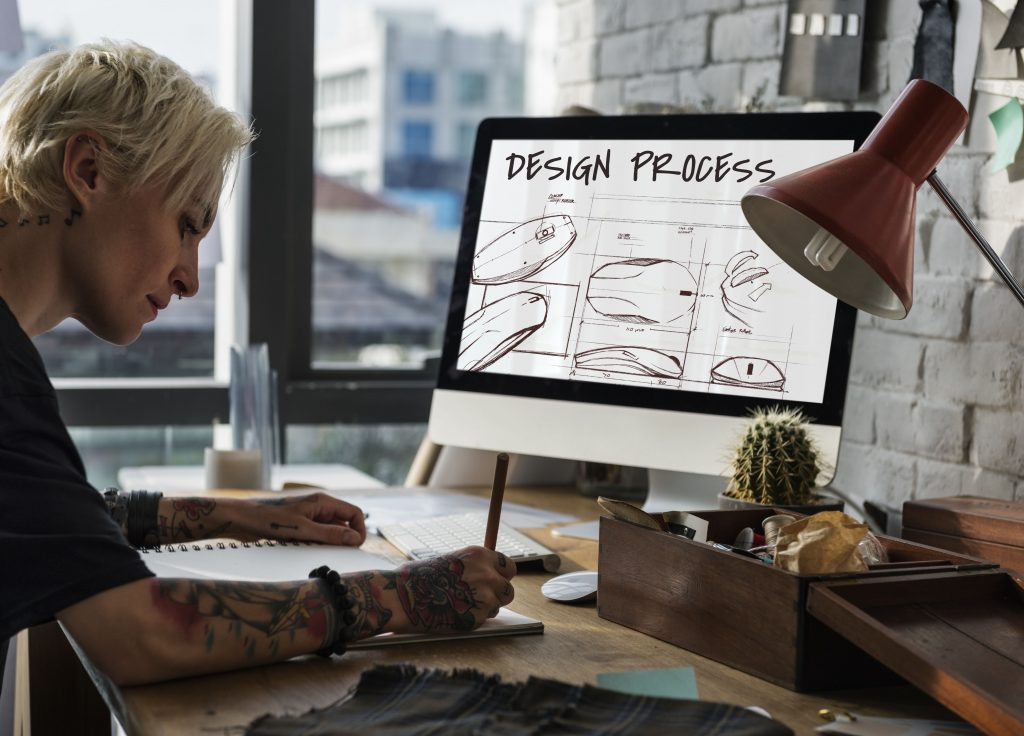Design is everywhere; it surrounds us both on the physical and the mental state. It dictates how we approach things, how we use things and how it affects us. Design’s effects are all over our daily lives. Design is fundamentally part of the universe. It is what we call the foundation of logic and emotion encapsulated into the one word: ‘Design’.
The design takes on many forms and in a variety of aspects; from a pen, we use to write, to the phone that’s in everyone’s pocket.
It is a stereotype belief that design is how something looks. It is so ingrained into our DNA, that people in some professional industries divide everything into Design and Function, where design is interchangeably referred to as the aesthetics. This is pretty much true when it comes to how consumers talk about things. If you are into design or just getting started, you might have then heard of the following terms: “functional design” and “User Experience Design”.
Functional design’s definition could vary from one expert to another but the mighty Wikipedia gives us an interesting definition of ” Functional Design is a paradigm used to simplify the design of hardware and software devices such as computer software and increasingly, 3D models. A functional design assures that each modular part of a device has only one responsibility and performs that responsibility with the minimum of side effects on other parts.”
Similarly, a freelancer named Dustin M.Wax has written up an interesting blog post called “7 Essential Guidelines For Functional Design”. His post summarises its article into this one very useful sentence of ” Look at what you’ve made. Beautiful, isn’t it? But does it work? For whom does it work? Of course you can use it, but can anyone else? In short, is it functional?”.
Before I dive deeper, I would like to talk to you now about User Experience Design, also known as UX design, and Product Design.
So what is User Experience Design? in short, it’s the process of the flow of usage of a product. For the sake of this article, let’s assume it’s a mobile application.

So the idea guy has approached you and wants this amazing app done. He or she tells you what they want out of it. And you are now responsible for the design, liaising and to provide all that is required for the developer.
Now in the real world, you can’t just design the look of it and give it to the developer. I mean sure, maybe but that’s not ideal and the project is probably doomed to fail if the developer doesn’t get back to you with more information unless they wear the designer hat as well and are just looking for a graphic/UI artist.
We are not talking about artists now are we? Nope. We are designers. A designer is someone who solves problems not just mindlessly picks a colour and fire up illustrator to create a shape.
Alright, so let’s say you are in a team. As the designer, you need to understand the brief and what the client/boss is after. Then consider the technical functionalities by either discussing it with the developer or yourself if you dabble in programming. It doesn’t matter if you are the developer too or just have some technical knowledge. At some point, you need to know how the engineering works. Ideally, not all of it but it should be enough to be able to determine the steps that are required for users to interact with the functionality of the application. You see this is already a great start of a good design. We are talking about the functionality and purely the function of the app. This in return, is also true for any types of a product; a chair, a kettle or a watch.
So now, you and the developer have discussed and determined that you need a quick way of users accessing certain parts of the menu that enables them to access some of the features. You might come up with multiple ways of accessing a page. In-app design and development. UI navigation is one of the most important things to get right. Because it dictates how the app works. It provides the laws in which a product has to function. It is the definition of its boundaries. So as you can see ( read ! ) this is all design.
In fact, in application development, the engineers often refer to it as the “Software Design Document”. The design document does not refer to what the colour of the user interface is for instance. But instead, it is the documentation and expression of the architecture of how the application ought to function. Furthermore, this kind of design allows the developers to properly plan the best infrastructure and technology that need to be either implemented; such technology would be either invented and done from scratch or some kind of third party integration is made. Regardless of what, the design is what matters. Design is the language of all things. It is the blueprint of every product and every experience.
So when next time you see a Youtuber reviewing an iPhone and tells you the design hasn’t changed, it means they are both right and wrong; right in a way that it “looks” and “seems” the same as before but wrong because internally there are heaps of new changes. There is now a haptic engine that allows for new user interactions, there is an exclusive artificial intelligence processor now that enables better photography and better Siri suggestions which in return enhances user experience dramatically.
The list could go on and on and we could tap into the philosophy of how our brains function and how we perceive the world; Is everything in this world than by definition designed? if so, is there a grand designer?









